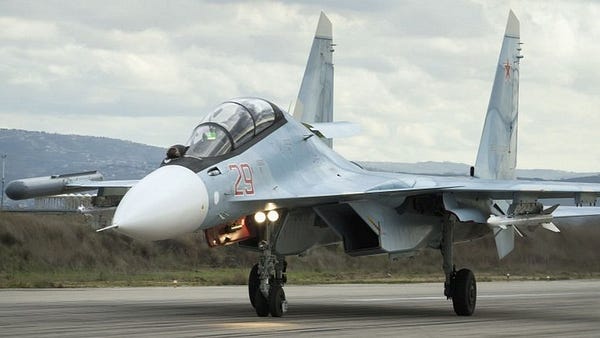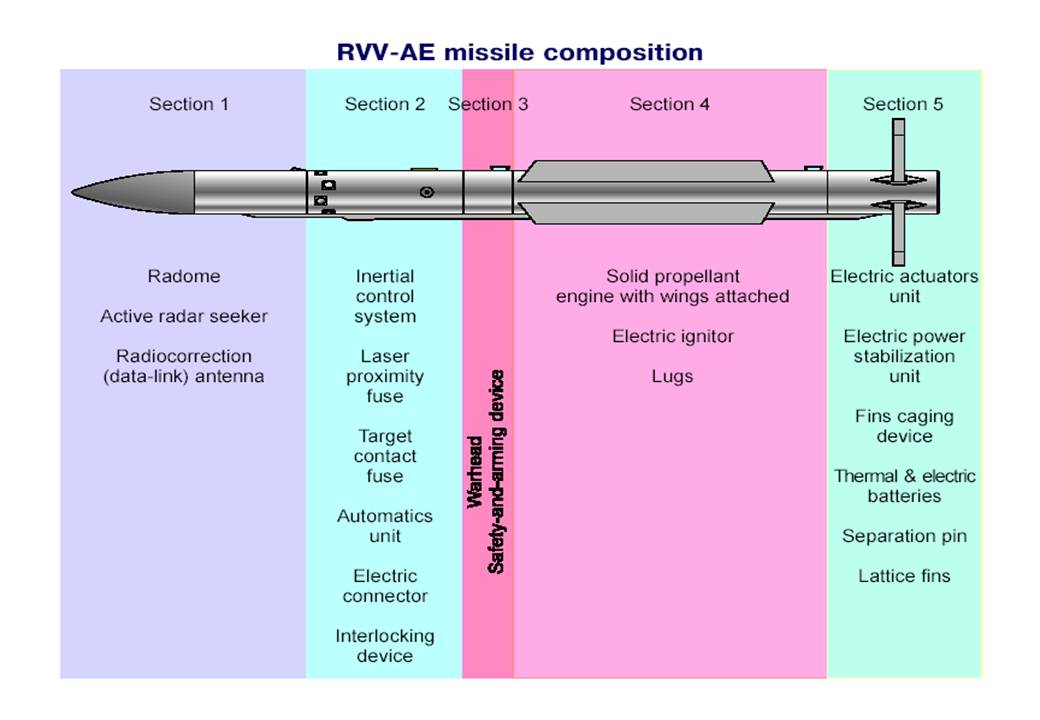
Posted on 11/14/2016 4:36:27 AM PST by sukhoi-30mki
Russia’s R-77 active-radar-homing air-to-air missile — NATO designation AA-12 — is widely considered to be equivalent to the American AIM-120 AMRAAM.
But in fact, the R-77 isn’t nearly as successful as the AIM-102. It may never have formally entered service with the Russian air force at all. In the best case, the number of operational, combat-ready rounds in the Russian arsenal can be counted on the fingers of two hands.
What used to be the Vympel Design Bureau — now known as the KTRV Corporation — started the work on the K-77, as it was then designated, in 1982, only for the Kremlin to more or less cancel the weapon five years later, over issues related to the 9B-1348 seeker head.
A new project, the K-77M or Izdeliye-170, replaced the K-77 effort. The K-77M featured the improved 9B-1348M1 seeker head. Development of the K-77M halted between 1989 and 1991 owing to funding shortages related to the collapse of the Soviet Union.
The Artem company in Ukraine manufactured most of the K-77M’s parts. Vympel had produced only around 200 pre-series rounds by the time the USSR dissolved. The Russians tested the missiles at the Akhtubinsk Test Center but never distributed any to operational squadrons.
Financing by potential export customers enabled some work to continue and thus the Izdeliye-190 — a.k.a. the RVV-AE — came into being. Manufactured in Russia and equipped with the Agat 9B-1348E seeker head, the RVV-AE was acquired by Algeria, China, Ethiopia, India, Indonesia, Malaysia, Sudan, Syria, Uganda and Venezuela.
It’s not clear whether the Russian air force actually bought any. The same can be said for an entire host of variants reported as “undergoing development” — ranging from the passive-homing R-77P to the infrared-homing R-77T to the ramjet-powered R-77-PD and the K-77M variant supposedly under development for Russia’s T-50 stealth fighter.
Indeed, the main variant the Russian air force wanted — the Izdeliye-170-1 or R-77-1, is still not in service.
Reportedly fitted with a streamlined nose covering the new 9B-1248 or Izdeliye-50-1 active radar seeker head, plus new fin fittings, it was test-fired from a Sukhoi Su-27SM-3 at Akhtubinsk in September 2010.
Time and again, photographs of various Russian air force aircraft depict them with AKU-170 launch rails for R-77s. However, the missiles themselves are strangely absent.
In the last six years, the Russian defense ministry has made only one official statement related to the R-77. On Aug. 26, 2015, the ministry announced a potentially $200-million tender for R-77-1 missiles.
Notable is that the statement in question is not an order, as such. It’s a call for companies interested in manufacturing the missiles to submit proposals. The outcome of this tender was never officially announced and thus it remains unclear whether series production has begun and if any have R-77–1 missiles have entered Russian service as of late 2016.

At left — on arrival in Syria in September 2015, Russian Su-30SM interceptors were primarily armed with old R-27 and R-73 missiles. R-77s of unknown origin appeared only in late November 2015.
This is the principal reason why the Russian Su-30SMs and Su-34s that arrived in Syria in September 2015 were still armed with old R-27 — NATO code name AA-10 Alamo — and R-73/AA-11 Archer air-to-air missiles.
Then on Nov. 24, 2015, Turkish air force F-16s shot down a Russian Su-24 that strayed into Turkish air space. A batch of R-77s promptly appear at Hmemmem air base, the main Russian installation in Syria. Since at least January 2016, Russian Su-30SMs and Su-35s have carried two R-77s on missions over Syria.
However, because Moscow never officially announced the results of the tender from August 2015, and because there is no evidence of series production of the Izdeliye-170-1, the origin of missiles in question remains opaque.
They might be from the original stock of Izdeliye-170s manufactured in Ukraine. They could be Izdeliye-190s manufactured in Russia for export. They could even be Syrian Izdeliye-190s that the Russians borrowed.

Interesting post!
I’m glad to say that - thanks to the election - we may never need to know if this missile is any good or not.
Disclaimer: Opinions posted on Free Republic are those of the individual posters and do not necessarily represent the opinion of Free Republic or its management. All materials posted herein are protected by copyright law and the exemption for fair use of copyrighted works.